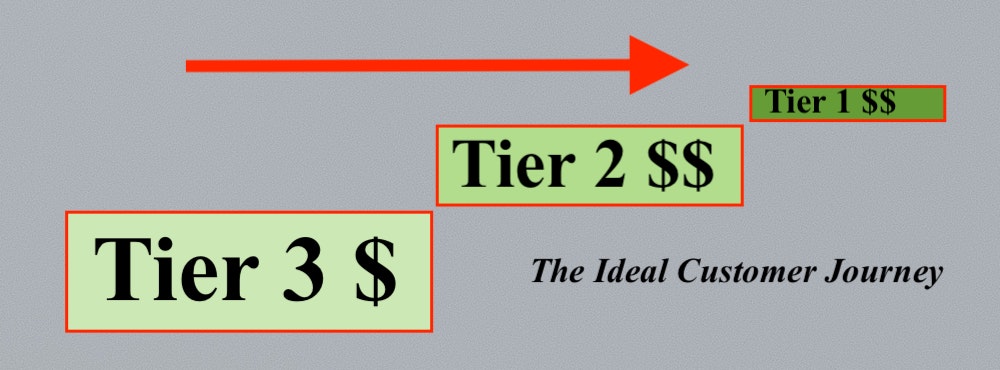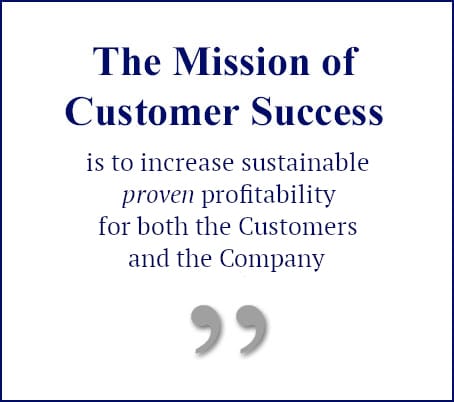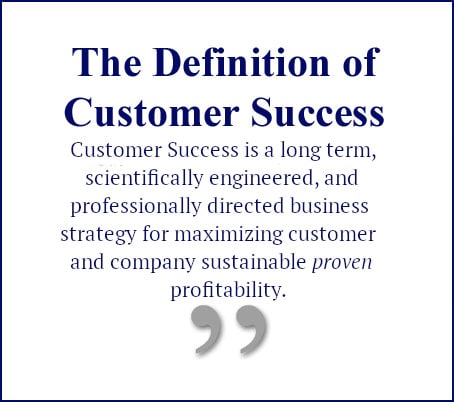Eventually all growing enterprises come to realize that customers aren’t created equally. Pareto’s Principle applies: a small percentage of accounts represents a large percentage of revenue. So a ‘spread the peanut butter’ approach to resources no longer makes sense for supporting the entire customer base. Instead, firms start to segment and ‘tier’ their accounts, seeking to deliver a different engagement model (e.g. high touch, light-touch, zero-touch) in Customer Success. The Customer Tiers Analysis Worksheet is a downloadable resource designed to help you through the process of identifying your tiers.
Dollars and Sense
 What’s the goal in business? It’s to make money, of course! And establishing a Customer Success operation helps. By ensuring your company keeps the promises it makes, and by earning trust with customers along the way, you make it more likely that they will renew their agreements and buy more. This means Customer Success contributes to your company’s revenue and valuation. One common way C-level executive and board members run the business is by using unit economics, referring to terms like Annual Contract Value (ACV), Cost to Serve (CTS), and Customer Lifetime Value (CLTV). When metrics can be expressed on a per-subscriber basis, then executives can benchmark and plan enterprise-wide improvements. So by calculating unit economics for individual engagement tiers, you can make better resource allocation decisions and communicate your Customer Success impact to senior executives in a way they’ll understand. Not only can you show the numbers by engagement tier, you can also optimize your precious resources and show how your investments lead to lower churn and higher financial returns.
What’s the goal in business? It’s to make money, of course! And establishing a Customer Success operation helps. By ensuring your company keeps the promises it makes, and by earning trust with customers along the way, you make it more likely that they will renew their agreements and buy more. This means Customer Success contributes to your company’s revenue and valuation. One common way C-level executive and board members run the business is by using unit economics, referring to terms like Annual Contract Value (ACV), Cost to Serve (CTS), and Customer Lifetime Value (CLTV). When metrics can be expressed on a per-subscriber basis, then executives can benchmark and plan enterprise-wide improvements. So by calculating unit economics for individual engagement tiers, you can make better resource allocation decisions and communicate your Customer Success impact to senior executives in a way they’ll understand. Not only can you show the numbers by engagement tier, you can also optimize your precious resources and show how your investments lead to lower churn and higher financial returns.
Using The Customer Tiers Analysis Worksheet
The downloadable Excel spreadsheet below helps you build the business case and analyze your operations when you convert from a single to a multiple-tier engagement structure. It uses common SaaS industry benchmarks as a guide and includes ‘dummy’ variables you can edit to tailor the model to your business. You’ll note that estimated Net Recurring Revenue, both with and without Customer Success, is a significant driver for revenue and profitability. This can also be used to set long-term improvement goals for your team and the entire company within each of the tiers. Be sure to read the ‘Instructions’ tab and follow the notes on the ‘1 Tier,’ ‘Pareto,’ and ‘3 Tiers’ tabs.
If You Need Help
 Ed Powers is a Customer Success and CX consultant with over 30 years’ experience helping companies perform at higher levels. He’s an expert on process modeling, analytics, and financial justification. Contact him at [email protected] for questions or assistance optimizing your CS results.
Ed Powers is a Customer Success and CX consultant with over 30 years’ experience helping companies perform at higher levels. He’s an expert on process modeling, analytics, and financial justification. Contact him at [email protected] for questions or assistance optimizing your CS results.








